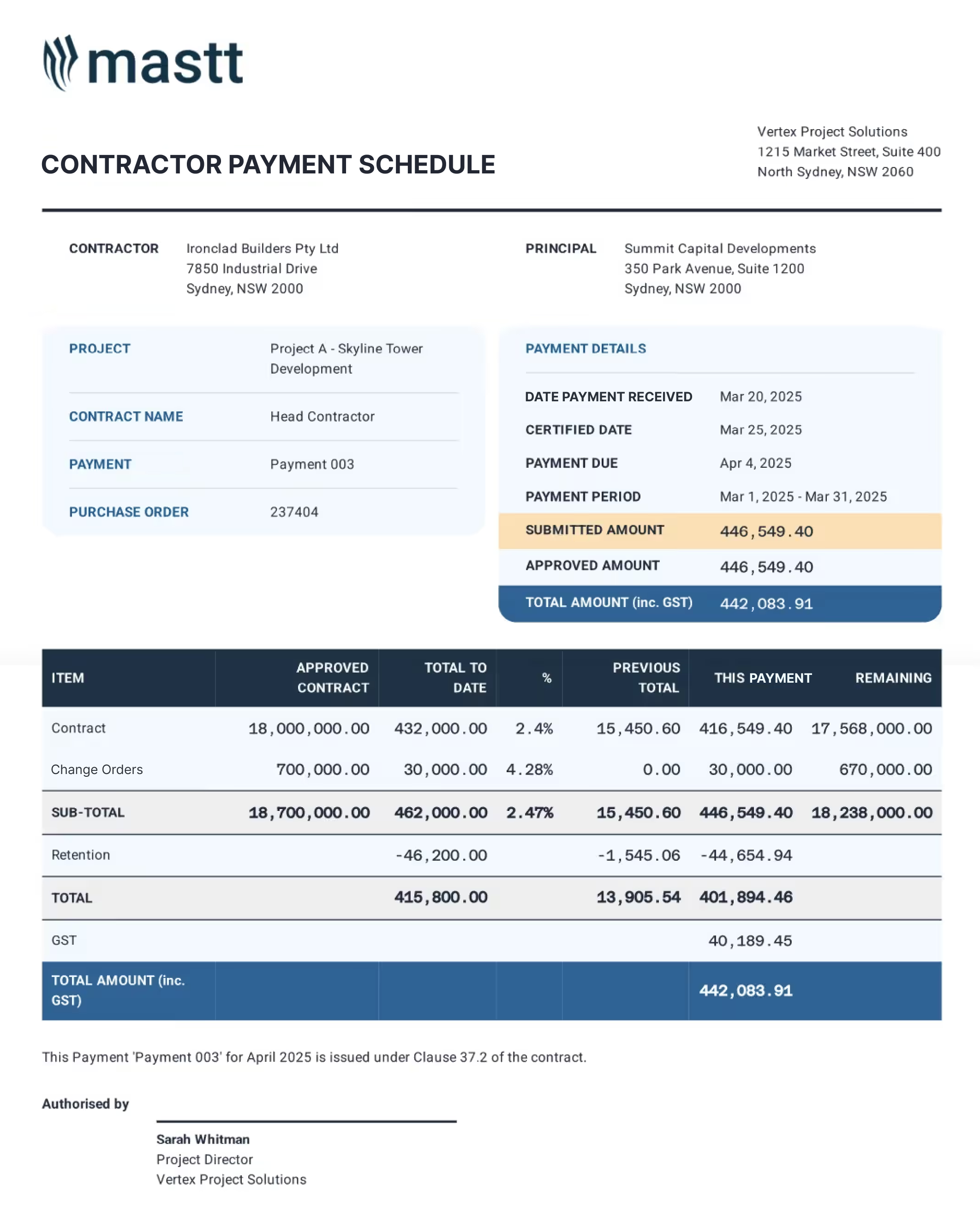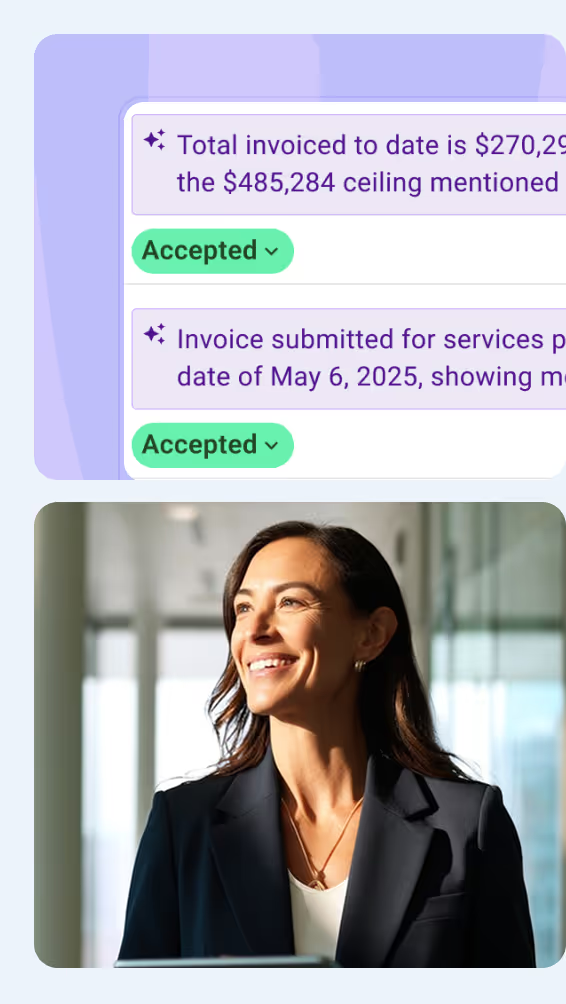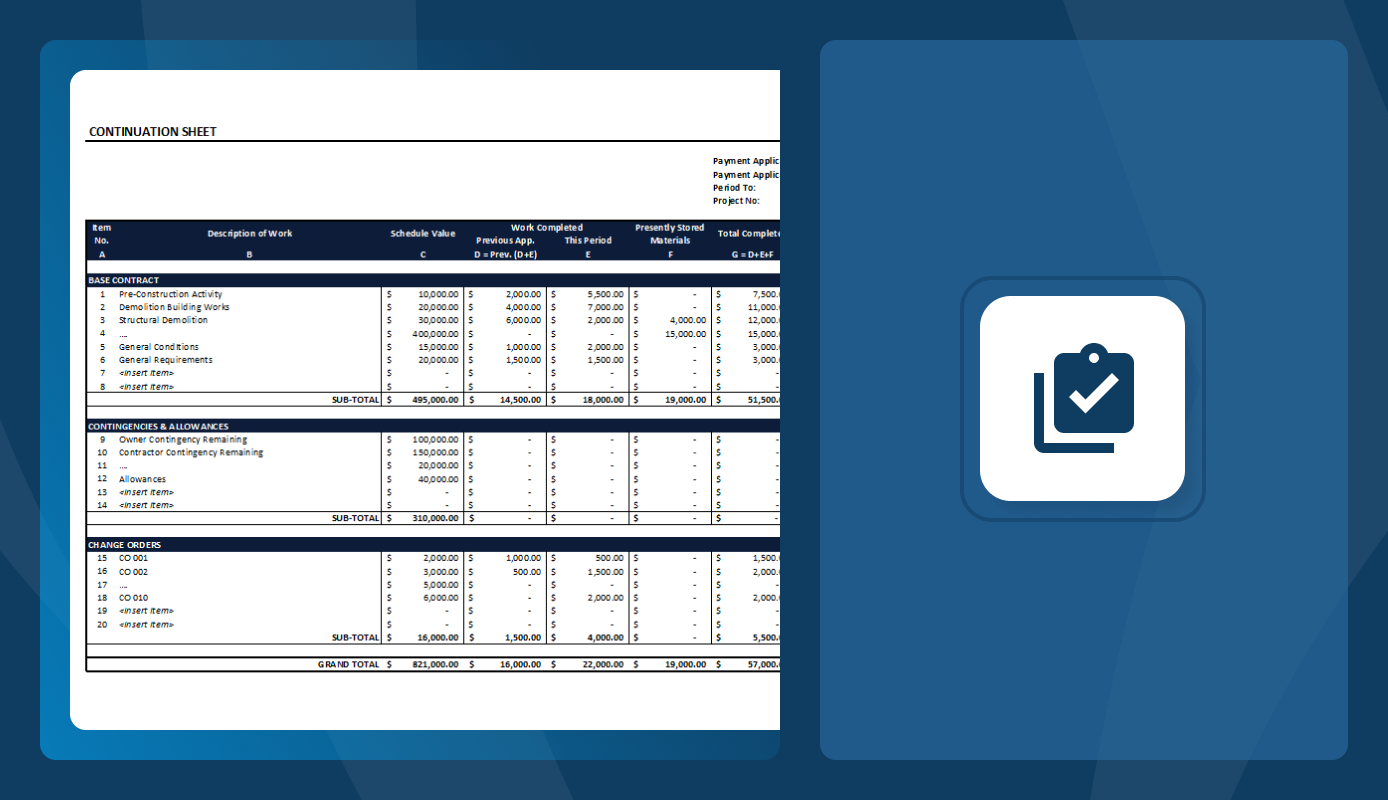Late payments cause more trouble than delays or defects by slowing down work, straining relationships, and hurting cash flow. A contractor payment schedule helps by clearly outlining when and how contractors get paid during a project.
If you manage construction projects or hire contractors, you need to get this right. In this guide, we’ll talk about what a contractor payment schedule includes, the different types, and how to build one that keeps work and money moving.
What is a Contractor Payment Schedule in Construction?
A contractor payment schedule is a document that defines when and how a contractor gets paid over the course of a construction project. It breaks the total contract value into smaller payments, which are released based on progress, time, or milestones. This payment schedule is also a key part of the pay application.
The contractor payment schedule is usually included in construction contracts and agreed upon before work begins. The payment schedule helps manage expectations, track cash flow, and reduce payment disputes. It applies to residential, commercial construction, and infrastructure projects, or any construction job where work is done in stages and payments need to follow.
Why Contractor Payment Schedules Matter for Project Success
Contractor payment schedules reduce the risk of late payments, missed deadlines, and stalled work. They create a clear path for when money changes hands, which helps every part of the project run more smoothly.
Here’s how a good payment schedule supports the overall success of a construction project:
Keeps Cash Flow Stable
Cash flow is one of the biggest risks in the construction industry. Contractors rely on scheduled payments to cover labor, materials, and equipment costs. A good payment schedule gives them the predictability they need to plan and deliver.
Matches Work with Payments
Payment schedules help owners stay in control by linking construction payments to verified progress. This ensures they’re not overpaying for unfinished work. It also makes it easier to review what’s been done before releasing funds.
Supports Scheduling and Planning
With payments tied to real progress, contractors and suppliers can plan ahead with confidence. It helps with crew scheduling, material lead times, and forecasting cash needs. Everyone stays in sync, which reduces project delays.
Reduces Disputes and Protects All Parties
When clear payment terms are in place from day one, there’s less room for confusion or disagreement later. Schedules serve as a clear reference if disputes come up, whether it’s a late invoice or a hold on funds.
Builds Trust and Accountability
Clear schedules set expectations on both sides. Contractors know they’ll be paid for completed work. Owners know payments won’t go out until the job hits specific checkpoints. This mutual accountability helps maintain professional relationships across complex builds.
When multiple subcontractors or vendors are involved, a structured payment schedule for contractors makes it easier to manage everyone’s expectations and keep the financial transaction of the project under control.

What Should a Contractor Payment Schedule Include
A contractor payment schedule should clearly lay out who gets paid, how much, when, and under what conditions. It needs to be detailed enough to prevent confusion but simple enough for all parties to follow.
Here’s what to include in a contractor payment schedule:
- Basic Project Information: Name, location, start date, expected completion date, and contract number.
- Parties Involved and Roles: Full names and contact details for the project owner, general contractor, subcontractors, and any consultants. List who’s responsible for approving and releasing payments.
- Scope of Work and Deliverables: Describe the work being paid for. Break it into tasks or phases that can be verified against the schedule of values.
- Payment Amounts and Frequency: Show total contract value, progress payment amounts for each phase, and when those payments are due. Use milestones, monthly intervals, or completion percentages.
- Contractor Payment Terms and Methods: List preferred payment methods (e.g., Electronic Fund Transfer, check) and any late payment penalties, advance payment or timely payment discounts, or invoicing instructions.
- Retainage Provisions: Note how much will be withheld from each payment (commonly 5-10%) and the conditions for releasing it at project completion.
- Dispute Resolution Steps: Include how contract disputes will be handled - through mediation, arbitration, or another agreed method.
- Signature and Verification Fields: Provide space for signatures, approval dates, and proof of lien waivers or other required documentation.
These details create a shared understanding between everyone involved and help keep payment delays and confusion to a minimum.
6 Common Types of Contractor Payment Schedules
Contractor payment schedules vary depending on project type, contract terms and conditions, and how the work is phased. Most follow one of several standard formats, each suited to different scopes and risk levels.
Here are the most common types of construction payment schedule for contractors:
1. Deposit and Final Payment
A deposit and final payment structure splits the total contract amount into two installments. The contractor receives an upfront deposit, typically 10% to 50%, before any work begins. The remaining balance is paid once the contractor completes the job.
The deposit and final payment structure is common for smaller payments job, like residential construction projects and renovations. The deposit helps cover startup costs like materials and permits. The final payment gives the property owner leverage to ensure the work is completed properly.
2. Progress Payments
Progress payments are made at regular intervals based on completed work. These are common in medium to large construction projects.
Contractors usually submit a monthly pay application, including a schedule of values and proof of progress. The owner or project consultant verifies the work and approves the payment. Spreading payments this way helps maintain consistent cash flow throughout longer builds.
3. Milestone-Based Payments
Milestone-based payments are tied to the completion of specific project phases, such as pouring the foundation, framing the structure, or passing major inspections. Once the contractor reaches and verifies a defined project milestone, the next payment is issued.
A milestone payment schedule works well for projects that can be broken down into clear, logical stages. Milestone payments give owners a stronger link between project progress and payments, while motivating contractors to hit deadlines.
4. Completion-Based Payments
Completion-based payments are tied to percentage-based progress across the entire scope of the project, usually at 25%, 50%, or 75% completion. These percentages are not linked to specific tasks but to overall progress on the job.
Completion-based payment schedules require accurate progress tracking, often using a detailed schedule of values and verification by a third party. Many project teams rely on progress monitoring software to track percent complete and link payments to real work done.
5. Time-Based Payments
Time-based payment schedules set payment intervals, such as weekly or monthly, regardless of how much work has been completed. This approach is common in service contracts or time and materials contracts, where progress is harder to measure in deliverables.
Time-based payments are predictable and easy to administer. However, they do require close monitoring to ensure the payment schedule stays aligned with actual project performance.
6. Retainage
Retainage is a fixed percentage (often 5% to 10%) withheld from each payment until the project reaches substantial completion. It acts as a safety net for project owners in case of unfinished or defective work.
The withheld amount is typically released after final inspections are completed and all contract requirements are met. Retainage adds financial protection without complicating the entire payment structure.
Who Creates the Contractor Payment Schedule
The contractor payment schedule is usually drafted during contract formation by the project owner or developer. But, the responsibility can shift depending on the project structure and the contract type.
Here’s who typically creates the contract payment schedule:
- Project Owner or Developer: On traditional design-bid-build projects, the owner or their representative often prepares the payment schedule and includes it in the contract documents.
- General Contractor (GC): In design-build or negotiated contracts, the GC may propose a payment schedule as part of their bid or during early contract negotiations. They often base it on internal budgets, subcontractor schedules, and resource planning.
- Construction Manager or Cost Consultant: On complex or high-value projects, owners may hire a third-party professional to align the payment schedule with the overall project timeline and budget. These professionals use tools like the schedule of values and work breakdown structures to map payments accurately.
- Subcontractors: While subcontractors don’t control the master schedule, they may negotiate their own payment terms that fit within the main contract. Their schedules often reflect when they expect to complete work and when they’ll need cash to keep moving.
Each party involved should review and agree to the payment schedule before signing the contract. This keeps expectations aligned and reduces the risk of future disputes.
Contractor Payment Schedule Example
A typical contractor payment schedule lists key payment events alongside work descriptions, due dates, payment amounts, and retainage.
The image below shows an example of a contractor payment schedule used for a commercial high-rise project. Each row shows how much work has been done, how much is being requested, and how much remains.

💡Pro tip: Always tie each payment to verified work, not just calendar dates. This keeps the schedule fair and helps avoid disputes later.
How to Build a Contractor Payment Schedule from Scratch
A contractor payment schedule should match the contract type, project timeline, and payment expectations. To build one, start by aligning payment triggers with the contract type, project scope, and work milestones.
Follow these steps to create a contractor payment schedule:
- Start with the Contract Type: Identify if the project uses a lump sum, cost-plus, or time and materials contract. Each one affects how payments are structured.
- Break Down the Scope of Work: List each phase or deliverable in plain language. Use a schedule of values template to divide the contract value into logical work sections.
- Align Payment Events to Project Milestones: Map each payment to a clear milestone or percentage of completion. Use project schedules (like a Gantt chart) to identify when work should trigger a payment.
- Factor in Upfront Costs and Lead Times: Account for early expenses like deposits, long-lead materials, permits, or mobilization. Include an initial payment if needed to avoid fronting large costs.
- Define Payment Frequency: Choose monthly, biweekly, or milestone-based intervals. Base it on how quickly work progresses and when invoices can be verified.
- Add Retainage and Payment Conditions: Set a retainage percentage (e.g., 5–10%) and define when it will be released. Add any required documents, such as lien waivers, approvals, or inspection reports.
- Build in Verification and Approval Steps: Decide who will verify work, sign off on invoices, and approve payment. Be clear on how disputes will be handled if progress is questioned.
- Use a Simple Table Format: Set up columns for work description, percentage, payment amount, due date, retainage, and approval status. Use tools like Excel, project management software, or templates to keep things clean and trackable.
💡 Pro Tip: A clear contractor payment schedule structure makes it easier to share with stakeholders, update during the project, and spot issues before they affect cash flow.
Best Practices for Managing Contractor Payment Schedules
A contractor payment schedule only works if it’s accurate, current, and enforced. As a project owner or manager, you play a key role in making sure payments follow real progress and meet contract terms.
Here’s how to manage the payment schedule for contractors effectively:
- Tie payments to verified work: Always require backup documentation, like site photos, inspection reports, or consultant sign-offs before approving a payment.
- Review every pay application carefully: Cross-check the requested work against the contract, schedule of values, and any approved change orders.
- Track actual payment dates: Don’t rely on due dates alone. Log when each payment was made to maintain a clear audit trail and avoid delays in retainage release.
- Use consistent documentation: Standardize forms for pay apps, lien waivers, and approvals so every contractor follows the same payment process.
- Automate reminders and logs: Use software or digital tools to track due dates, send notifications, and store supporting documents.
- Set clear review and approval roles: Assign who checks work, approves payments, and signs off on releases. Avoid delays caused by unclear responsibilities.
A well-managed payment schedule gives you better control over budget, schedule, and risk, without slowing down the work.
💡 Pro tip: Juggling payment schedules across multiple contractors shouldn’t keep you up at night. Construction project management software like Mastt give you a clear view of approvals, progress, and payment timelines, all in one place. No more digging through spreadsheets or chasing email threads.
Final Thoughts on Contractor Payment Schedule
Most delays, disputes, and cost blowouts in construction don’t start with bad intentions. They start with unclear payment expectations.
A well-built contractor payment schedule sets the pace, defines accountability, and forces everyone to align around real progress. If you're not treating payment structure as a project control tool, you're leaving too much to chance.

















.avif)

